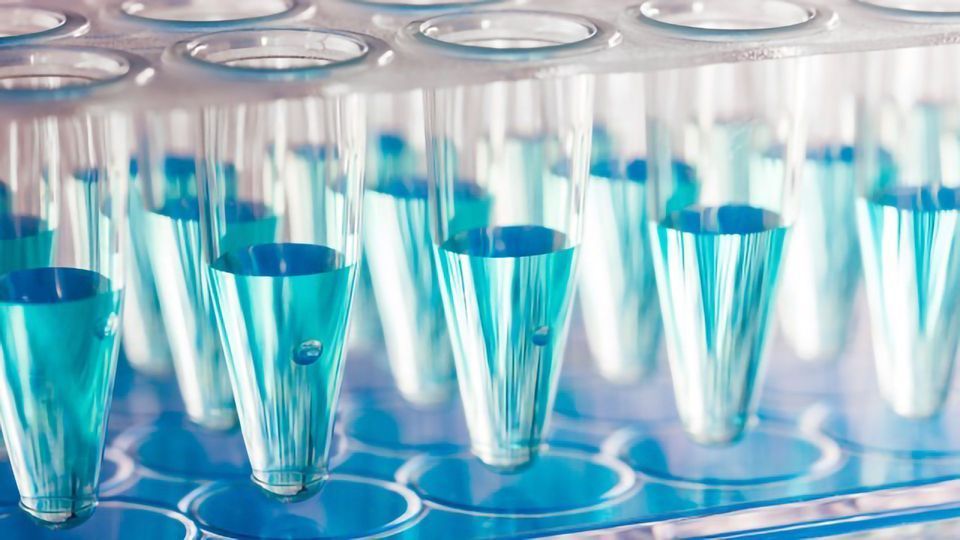Filters
Host (768597)
Bovine (1090)Canine (20)Cat (408)Chicken (1642)Cod (2)Cow (333)Crab (15)Dog (524)Dolphin (2)Duck (13)E Coli (239129)Equine (7)Feline (1864)Ferret (306)Fish (125)Frog (55)Goat (36847)Guinea Pig (752)Hamster (1376)Horse (903)Insect (2053)Mammalian (512)Mice (6)Monkey (601)Mouse (96266)Pig (197)Porcine (70)Rabbit (358709)Rat (11723)Ray (55)Salamander (4)Salmon (15)Shark (3)Sheep (4247)Snake (4)Swine (301)Turkey (57)Whale (3)Yeast (5336)Zebrafish (3022)Isotype (156643)
IgA (13624)IgA1 (941)IgA2 (318)IgD (1949)IgE (5594)IgG (87187)IgG1 (16733)IgG2 (1329)IgG3 (2719)IgG4 (1689)IgM (22029)IgY (2531)Label (239340)
AF488 (2465)AF594 (662)AF647 (2324)ALEXA (11546)ALEXA FLUOR 350 (255)ALEXA FLUOR 405 (260)ALEXA FLUOR 488 (672)ALEXA FLUOR 532 (260)ALEXA FLUOR 555 (274)ALEXA FLUOR 568 (253)ALEXA FLUOR 594 (299)ALEXA FLUOR 633 (262)ALEXA FLUOR 647 (607)ALEXA FLUOR 660 (252)ALEXA FLUOR 680 (422)ALEXA FLUOR 700 (2)ALEXA FLUOR 750 (414)ALEXA FLUOR 790 (215)Alkaline Phosphatase (825)Allophycocyanin (32)ALP (387)AMCA (80)AP (1160)APC (15217)APC C750 (13)Apc Cy7 (1248)ATTO 390 (3)ATTO 488 (6)ATTO 550 (1)ATTO 594 (5)ATTO 647N (4)AVI (53)Beads (225)Beta Gal (2)BgG (1)BIMA (6)Biotin (27817)Biotinylated (1810)Blue (708)BSA (878)BTG (46)C Terminal (688)CF Blue (19)Colloidal (22)Conjugated (29246)Cy (163)Cy3 (390)Cy5 (2041)Cy5 5 (2469)Cy5 PE (1)Cy7 (3638)Dual (170)DY549 (3)DY649 (3)Dye (1)DyLight (1430)DyLight 405 (7)DyLight 488 (216)DyLight 549 (17)DyLight 594 (84)DyLight 649 (3)DyLight 650 (35)DyLight 680 (17)DyLight 800 (21)Fam (5)Fc Tag (8)FITC (30165)Flag (208)Fluorescent (146)GFP (563)GFP Tag (164)Glucose Oxidase (59)Gold (511)Green (580)GST (711)GST Tag (315)HA Tag (430)His (619)His Tag (492)Horseradish (550)HRP (12960)HSA (249)iFluor (16571)Isoform b (31)KLH (88)Luciferase (105)Magnetic (254)MBP (338)MBP Tag (87)Myc Tag (398)OC 515 (1)Orange (78)OVA (104)Pacific Blue (213)Particle (64)PE (33571)PerCP (8438)Peroxidase (1380)POD (11)Poly Hrp (92)Poly Hrp40 (13)Poly Hrp80 (3)Puro (32)Red (2440)RFP Tag (63)Rhodamine (607)RPE (910)S Tag (194)SCF (184)SPRD (351)Streptavidin (55)SureLight (77)T7 Tag (97)Tag (4710)Texas (1249)Texas Red (1231)Triple (10)TRITC (1401)TRX tag (87)Unconjugated (2110)Unlabeled (218)Yellow (84)Pathogen (489613)
Adenovirus (8665)AIV (315)Bordetella (25035)Borrelia (18281)Candida (17817)Chikungunya (638)Chlamydia (17650)CMV (121394)Coronavirus (5948)Coxsackie (854)Dengue (2868)EBV (1510)Echovirus (215)Enterovirus (677)Hantavirus (254)HAV (905)HBV (2095)HHV (873)HIV (7865)hMPV (300)HSV (2356)HTLV (634)Influenza (22132)Isolate (1208)KSHV (396)Lentivirus (3755)Lineage (3025)Lysate (127759)Marek (93)Measles (1163)Parainfluenza (1681)Poliovirus (3030)Poxvirus (74)Rabies (1519)Reovirus (527)Retrovirus (1069)Rhinovirus (507)Rotavirus (5346)RSV (1781)Rubella (1070)SIV (277)Strain (67790)Vaccinia (7233)VZV (666)WNV (363)Species (2982223)
Alligator (10)Bovine (159546)Canine (120648)Cat (13082)Chicken (113771)Cod (1)Cow (2030)Dog (12745)Dolphin (21)Duck (9567)Equine (2004)Feline (996)Ferret (259)Fish (12797)Frog (1)Goat (90451)Guinea Pig (87888)Hamster (36959)Horse (41226)Human (955186)Insect (653)Lemur (119)Lizard (24)Monkey (110914)Mouse (470743)Pig (26204)Porcine (131703)Rabbit (127597)Rat (347841)Ray (442)Salmon (348)Seal (8)Shark (29)Sheep (104984)Snake (12)Swine (511)Toad (4)Turkey (244)Turtle (75)Whale (45)Zebrafish (535)Technique (5597646)
Activation (170393)Activity (10733)Affinity (44631)Agarose (2604)Aggregation (199)Antigen (135358)Apoptosis (27447)Array (2022)Blocking (71767)Blood (8528)Blot (10966)ChiP (815)Chromatin (6286)Colorimetric (9913)Control (80065)Culture (3218)Cytometry (5481)Depletion (54)DNA (172449)Dot (233)EIA (1039)Electron (6275)Electrophoresis (254)Elispot (1294)Enzymes (52671)Exosome (4280)Extract (1090)Fab (2230)FACS (43)FC (80929)Flow (6666)Fluorometric (1407)Formalin (97)Frozen (2671)Functional (708)Gel (2484)HTS (136)IF (12906)IHC (16566)Immunoassay (1589)Immunofluorescence (4119)Immunohistochemistry (72)Immunoprecipitation (68)intracellular (5602)IP (2840)iPSC (259)Isotype (8791)Lateral (1585)Lenti (319416)Light (37250)Microarray (47)MicroRNA (4834)Microscopy (52)miRNA (88044)Monoclonal (516109)Multi (3844)Multiplex (302)Negative (4261)PAGE (2520)Panel (1520)Paraffin (2587)PBS (20270)PCR (9)Peptide (276160)PerCP (13759)Polyclonal (2762994)Positive (6335)Precipitation (61)Premix (130)Primers (3467)Probe (2627)Profile (229)Pure (7808)Purification (15)Purified (78305)Real Time (3042)Resin (2955)Reverse (2435)RIA (460)RNAi (17)Rox (1022)RT PCR (6608)Sample (2667)SDS (1527)Section (2895)Separation (86)Sequencing (122)Shift (22)siRNA (319447)Standard (42468)Sterile (10170)Strip (1863)Taq (2)Tip (1176)Tissue (42812)Tube (3306)Vitro (3577)Vivo (981)WB (2515)Western Blot (10683)Tissue (2015946)
Adenocarcinoma (1075)Adipose (3459)Adrenal (657)Adult (4883)Amniotic (65)Animal (2447)Aorta (436)Appendix (89)Array (2022)Ascites (4377)Bile Duct (20)Bladder (1672)Blood (8528)Bone (27330)Brain (31189)Breast (10917)Calvaria (28)Carcinoma (13493)cDNA (58547)Cell (413805)Cellular (9357)Cerebellum (700)Cervix (232)Child (1)Choroid (19)Colon (3911)Connective (3601)Contaminant (3)Control (80065)Cord (661)Corpus (148)Cortex (698)Dendritic (1849)Diseased (265)Donor (1360)Duct (861)Duodenum (643)Embryo (425)Embryonic (4583)Endometrium (463)Endothelium (1424)Epidermis (166)Epithelium (4221)Esophagus (716)Exosome (4280)Eye (2033)Female (475)Frozen (2671)Gallbladder (155)Genital (5)Gland (3436)Granulocyte (8981)Heart (6850)Hela (413)Hippocampus (325)Histiocytic (74)Ileum (201)Insect (4880)Intestine (1944)Isolate (1208)Jejunum (175)Kidney (8075)Langerhans (283)Leukemia (21541)Liver (17340)Lobe (835)Lung (6064)Lymph (1208)Lymphatic (639)lymphocyte (22572)Lymphoma (12782)Lysate (127759)Lysosome (2813)Macrophage (31794)Male (1617)Malignant (1465)Mammary (1985)Mantle (1042)Marrow (2210)Mastocytoma (3)Matched (11710)Medulla (156)Melanoma (15522)Membrane (105772)Metastatic (3574)Mitochondrial (160319)Muscle (37419)Myeloma (748)Myocardium (11)Nerve (6398)Neuronal (17028)Node (1206)Normal (9486)Omentum (10)Ovarian (2509)Ovary (1172)Pair (47185)Pancreas (2843)Panel (1520)Penis (64)Peripheral (1912)Pharynx (122)Pituitary (5411)Placenta (4038)Prostate (9423)Proximal (318)Rectum (316)Region (202210)Retina (956)Salivary (3119)Sarcoma (6946)Section (2895)Serum (24880)Set (167654)Skeletal (13628)Skin (1879)Smooth (7577)Spinal (424)Spleen (2292)Stem (8892)Stomach (925)Stroma (49)Subcutaneous (47)Testis (15393)Thalamus (127)Thoracic (60)Throat (40)Thymus (2986)Thyroid (14121)Tongue (140)Total (10135)Trachea (227)Transformed (175)Tubule (48)Tumor (76921)Umbilical (208)Ureter (73)Urinary (2466)Uterine (303)Uterus (414)Exploring Advanced PCR Technologies : Innovations Shaping the Future of Molecular Biology
Genprice
Scientific Publications

Exploring Advanced PCR Technologies : Innovations Shaping the Future of Molecular Biology
Introduction
Polymerase Chain Reaction (PCR) has become an essential technique in molecular biology, revolutionizing how we understand DNA and RNA. Over the years, numerous advancements in PCR technologies have made it more precise, faster, and applicable to a broader range of scientific fields. This blog delves into the advanced PCR technologies that are reshaping research, diagnostics, and biotechnology.
Digital PCR (dPCR) – Precision Beyond Traditional PCR
Digital PCR (dPCR) provides a major leap forward from traditional PCR by enabling absolute quantification of nucleic acids. Unlike conventional PCR, which offers relative measures based on cycle thresholds, dPCR partitions the PCR reaction into thousands of micro-reactions, counting the number of DNA molecules directly. This technology improves sensitivity and precision, especially for detecting rare mutations and low-abundance targets.
The power of dPCR lies in its minimal reliance on calibration curves, which significantly reduces the risk of experimental error. As a result, dPCR is increasingly being used in clinical diagnostics, cancer research, and genetic mutation detection, where precise quantification is crucial.
For in-depth reading on dPCR:
Quantitative PCR (qPCR) – Real-Time Monitoring of Amplification
Quantitative PCR (qPCR), also known as real-time PCR, is a widely utilized technique that allows for the measurement of DNA or RNA during amplification. Unlike traditional PCR, where the results are analyzed at the end, qPCR monitors the amplification process in real-time through the use of fluorescent dyes or probes that emit light during DNA synthesis. This enables accurate quantification of the target DNA or RNA molecules with high sensitivity.
With its ability to monitor PCR amplification as it occurs, qPCR has become a staple in gene expression analysis, pathogen detection, and genetic research. Advances in multiplex qPCR allow researchers to measure multiple targets simultaneously in a single reaction, further enhancing throughput and efficiency.
High-Fidelity PCR – Precision for Cloning and Sequencing
High-fidelity PCR utilizes DNA polymerases with proofreading abilities, significantly reducing the error rate during amplification. These specialized enzymes ensure accurate replication of DNA sequences, making high-fidelity PCR indispensable for applications where accuracy is critical, such as cloning, amplicon sequencing, and genetic engineering.
By maintaining the integrity of the template DNA, high-fidelity PCR minimizes the risk of introducing mutations, which is essential for applications like next-generation sequencing (NGS) and single nucleotide polymorphism (SNP) analysis. With its ability to amplify complex or GC-rich regions, high-fidelity PCR is crucial for the synthesis of high-quality genetic material.
Multiplex PCR – Amplifying Multiple Targets in One Reaction
Multiplex PCR is a technique that allows for the amplification of multiple DNA targets within a single PCR reaction. By using several primer pairs specific to different regions, multiplex PCR simultaneously amplifies multiple sequences, saving both time and resources.
This technique has transformed diagnostics by allowing the detection of multiple pathogens or genetic markers in a single test. It is widely used in microbial diagnostics, genetic screening, and forensic DNA analysis. The ability to run several tests at once makes multiplex PCR particularly useful for large-scale studies, such as genetic epidemiology and environmental monitoring.
Reverse Transcription PCR (RT-PCR) – Converting RNA to cDNA for Amplification
Reverse Transcription PCR (RT-PCR) is an extension of PCR used to amplify RNA by first converting it into complementary DNA (cDNA) using the enzyme reverse transcriptase. This process enables the study of gene expression at the RNA level and is essential for understanding transcriptional regulation and alternative splicing.
RT-PCR is widely used in transcriptomics, where researchers investigate the expression of specific genes under various conditions. Recent advances in RT-PCR technology have improved its sensitivity and accuracy, enabling the analysis of low-abundance transcripts and single-cell RNA sequencing.
Learn more about RT-PCR:
Conclusion: The Future of PCR Technologies
Advanced PCR technologies have dramatically enhanced the sensitivity, specificity, and speed of molecular analyses. As these technologies continue to evolve, they open new doors in various fields, from clinical diagnostics and genetic research to environmental monitoring and forensic science. Innovations such as digital PCR, multiplex PCR, and isothermal amplification are leading the way toward more accessible and accurate molecular testing, improving our ability to detect and understand genetic information at unprecedented levels.
